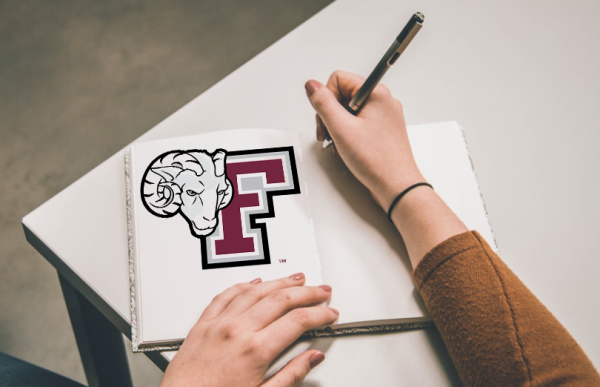Fordham Senior Researches TikTok Algorithms
Sabine Ryan, FCRH ’23, spent the summer researching the TikTok algorithm to test her hypothesis that TikTok can predict peoples’ sexuality before they know it themselves.
The inspiration for Ryan’s hypothesis came from personal experience. Ryan came out as queer during lockdown for the COVID-19 pandemic in 2020. At the same time that Ryan was figuring out their sexuality, they were very active on TikTok. After coming out, Ryan noticed that their TikTok “for you page” had been full of queer content before they knew that they were queer.
“I was a freshman when the pandemic started,” said Ryan. “I noticed that when we all came back after lockdown, a really significant number of people that I knew had come out, and many of them had the same experience I did with TikTok. I was really interested to see if there was an explanation and what the tie was between TikTok’s algorithm specifically and this phenomenon.”
Ryan created two TikTok accounts at the beginning of June under separate email addresses to test how the algorithm responds to different behavior. The first account was the control. Ryan watched every video on the “for you page” of this account all the way through. The second account functioned as the independent variable. Ryan liked every video on the “for you page” of this account that contained queer content and followed every creator that posted queer content.
“I wanted to be as objective as possible when deciding whether content counted as queer or not. Objectivity is tough when you’re trying to determine someone’s sexuality,” said Ryan. “I started out by looking in each video for anything that denoted that the creator identified as queer in the background or the tags. Sometimes people would have a pride flag as a profile picture or LGBTQ+ tags in the caption.”
After seeing minimal differences in the algorithm’s response for the two accounts, Ryan began to click “not interested” on every video on the second account that did not contain queer content. “I realized pretty early on that it wasn’t enough to engage with queer content. In order for the algorithm to mark my account as queer, I had to show active disinterest in content that wasn’t queer,” said Ryan.
While interacting with the two accounts, Ryan noticed a particularly large difference in the advertisements on each “for you page.” The advertisements on the control account were very generic and impersonal. However, the queer account had many advertisements for Amazon Prime shows about queer characters.
Ryan continued collecting data on these two accounts until the end of June when they began to compare results to distinguish common characteristics in queer content. With this information, Ryan worked backwards and tested how the algorithm interacts with content from a different angle.
“I created a third TikTok account where I liked videos based off of the characteristics that were labeled as queer besides someone outright saying ‘I’m gay’ or ‘I’m trans,’” said Ryan. This account gave Ryan insight into how TikTok’s algorithm reacts when a user has similar interests with queer creators but does not interact with overtly queer content.
Ryan came to the conclusion that TikTok’s algorithm is more focused on grouping users based on common interests rather than determining a user’s sexuality. “Although TikTok’s algorithm is able to sense people’s sexualities, it doesn’t really care what your sexuality is as long as you’re engaging with the app and giving them data,” said Ryan.
Ryan will present their research at the FCRH Undergraduate Research Symposium in May.
“I’m really interested to see how people view the way queerness was talked about during the pandemic. Going into the pandemic, a lot of people were really concerned about people being quarantined in situations that were unsafe because they had homophobic parents. But I think people also did more self-actualizing during that time discovering their sexuality and gender identity during a dark time. I’d like people to see all the complexities,” said Ryan.












































































































































































































